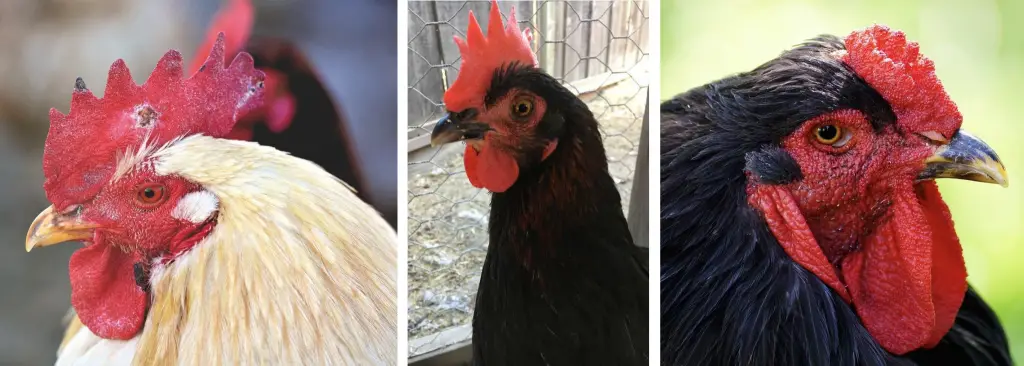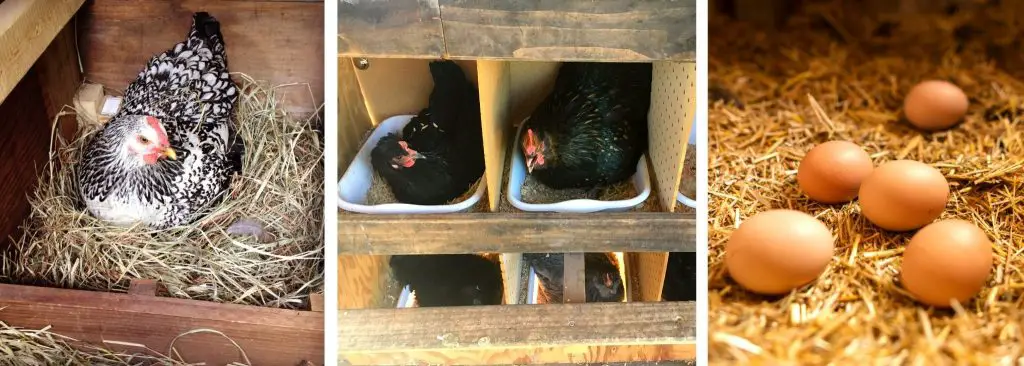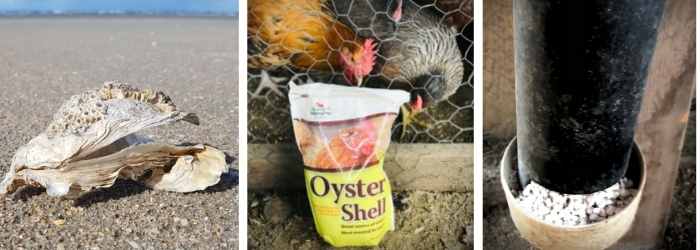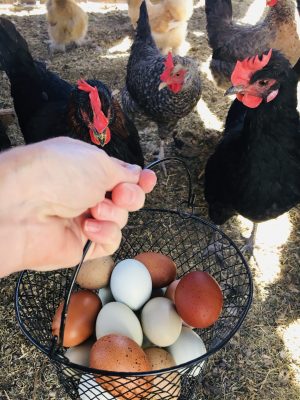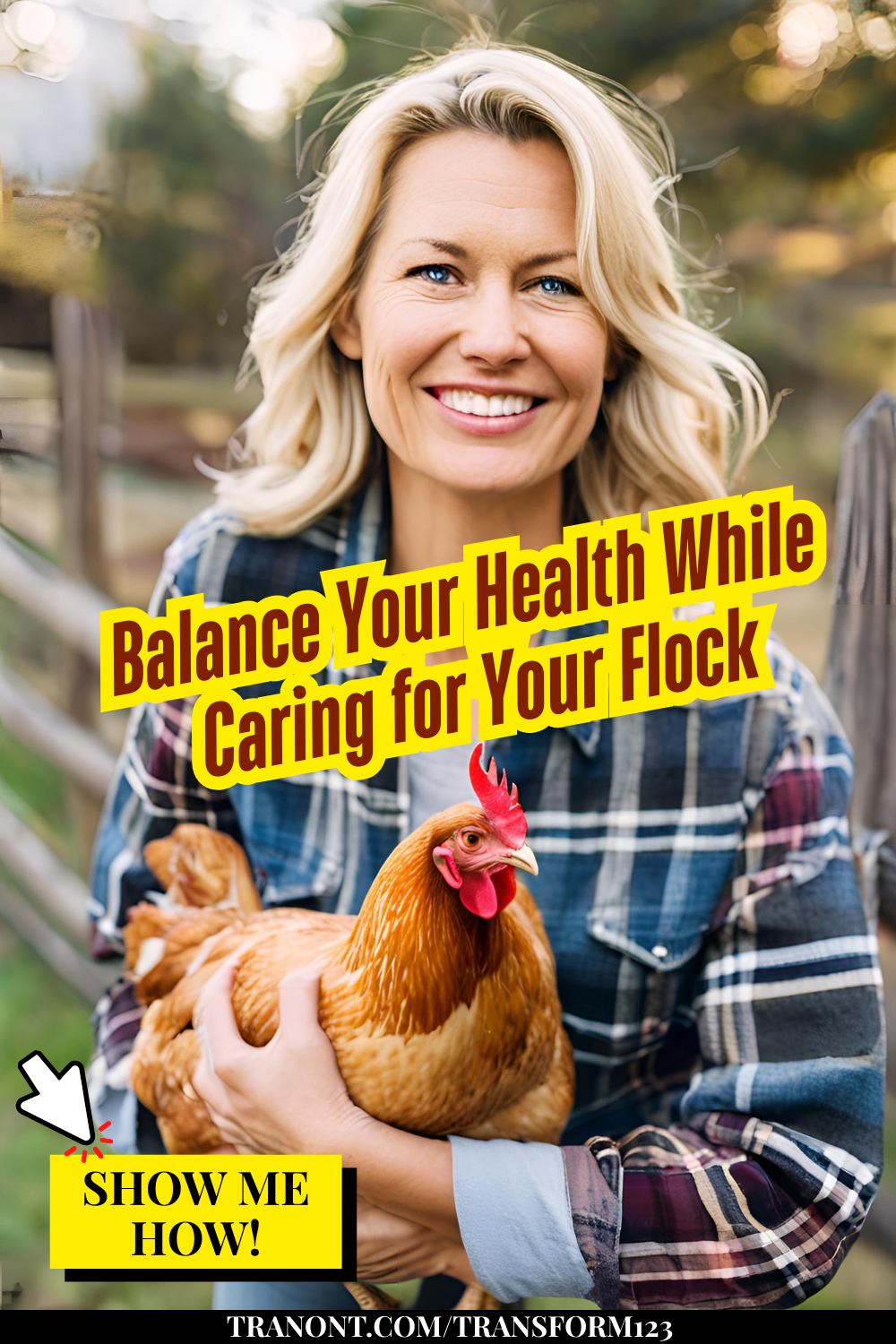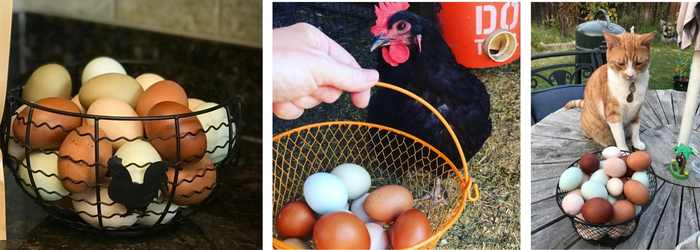
It can seem like an eternity waiting for your hen to lay her first egg! Luckily, there are some tell-tale signs to look for that will help answer one of the most asked questions of chicken owners, “When do hens start laying eggs?”
1. Pelvic Bones Separated
In order for a hen to be able to physically lay an egg, its pelvic bones must be separated enough to allow an egg to pass through it.
As a hen grows, her pelvic bones will slowly separate.
How to Check a Hens Pelvic Bone Gap
STEP 1: Locate the hens vent.
STEP 2: Place a flat hand, finger side facing down, directly above the vent.
STEP 3: With your fingers, feel for the pointy parts of your hens pelvic bones. You should feel them on both sides, slightly above the vent.
STEP 4: How many of your fingers can you fit between the two pelvic bones?
Reading Hen Pelvic Bone Gap Results
| FINGER DISTANCE BETWEEN PELVIC BONES | IS YOUR HEN READY TO START LAYING EGGS? |
|---|---|
| 1 FINGER | YOUR HEN IS TOO YOUNG OR NOT READY FOR EGG LAYING. |
| 2 FINGERS | SMALLER BREEDS CAN BE LAYING. REGULAR BREEDS MAY BE LAYING |
| 3-4 FINGERS | DEFINITELY LAYING AND CAPABLE OF PRODUCING LARGE EGGS |
2. Hen is at Least 16 Weeks Old
A hen must be sexually mature in order to be able to produce an egg. The average age that a chicken is sexually mature and able to produce eggs is between 16-24 weeks.
Different breeds mature at different times.
Do All Breeds Start Laying Around the Same Time?
Not all chicken breeds will begin laying at the same time. Most hens will begin laying between 16-24 weeks, but others are may begin much later. Silkies develop much slower and are not sexually mature until much later. The average age that a silkie chicken will begin laying eggs is around 8 months of age.
3. Comb and Wattle Turn a Deep Red Color
When a healthy hen becomes sexually mature, it begins to have increased blood circulation to its comb and wattle. The once pale, pink comb and wattle will gradually turn a beautiful, bright red color.
A rosy red comb and wattle signifies that your hen is sexually mature and getting ready for egg laying.
4. The Submissive Squat of Point of Lay Hens
What does it mean if my hen squats?
When a hen reaches sexual maturity and is ready to lay, she will do what is called, a “submissive squat.” She will squat down, flatten her back, spread her wings to the side and lower her tail when approached by a rooster. This is a signal to him that she is receptive to mating.
Squatting down, flattening her back and lowering her tail feathers makes it easier for the rooster to jump up on her back to mate.
A hen will spread her wing feathers out to keep balance while the rooster is “treading” on her back.
It isn’t uncommon to also see a hen lower in the pecking order do a submissive squat when approached by a hen higher up in the pecking order.
This squatting instinct is so strong, that in the absence of a rooster, a hen approaching laying age may squat when a human approaches it. If this happens, expect her to start laying eggs within the week!
5. Frequent Visits to the Nesting Box
A hen instinctively knows when its body is getting ready to start laying eggs. She will seek out a soft, quiet, dark place to lay her egg.
Try to make your nesting boxes as inviting as possible. Some people will even dress them up by installing privacy curtains and sprinkling egg laying herbs in the nesting box to encourage egg laying!
Tips to Encourage Egg Laying in the Nesting Box
| TIPS TO ENCOURAGE EGG LAYING IN THE NESTING BOX |
|---|
| 1. ADD DRIED EGG LAYING HERBS TO THE NESTING BOXES |
| 2. PROVIDE THE RIGHT NUMBER OF BOXES |
| 3. PROVIDE THE RIGHT SIZE BOXES |
| 4. PUT THEM IN A QUIET LOCATION |
| 5. NESTING BOXES SHOULD BE IN A DARK LOCATION |
| 6. NESTING BOXES SHOULD BE AT THE RIGHT LEVEL |
| 7. PROVIDE NESTING MATERIAL |
| 8. ADD PRIVACY CURTAINS |
| 9. CLEAN THE NESTING BOXES REGULARLY |
| 10. HAVE NESTING BOXES AVAILABLE BY 16 WEEKS OF AGE |
| 11. KEEP THE COOP COOL |
| 12. BLOCK OFF UNWANTED LAYING AREAS |
| 13. ADD FAKE EGGS TO NESTING BOXES |
| 14. KEEP HENS LOCKED IN COOP UNTIL AFTERNOON |
6. Hen Shows Interest in Oyster Shells
A hen that is working on producing eggs needs 4 times the amount of calcium! Laying hens require 4-5 grams of calcium each day in order to produce the optimum amount of eggs.
Do I Have to Provide Oyster Shells for My Laying Hens?
Laying hens need to be provided with increased calcium, such as oyster shells or crushed egg shells for a variety of reasons:
- Hens that are provided with the proper amount of calcium in their diet will produce the optimum amount of eggs for their breed as well as larger eggs with thicker shells.
- A lack of calcium in a hens diet can lead to the production of less eggs with thinner egg shells.
- It can also cause hens to develop softening of their bones and rickets.
- This is why it is important to introduce oyster shell to your hens as they approach laying age.

A chicken instinctively knows what its body needs (or may be lacking) and will seek out foods that contain that substance.
Offer oyster shell separate from the chicken feed. Your hens will only eat as much as its body requires. If you mix the oyster shell in with chicken feed, your hens may accidentally get too much calcium.
Once you begin to see your hens eating from the oyster shell station, you can expect to see eggs from them very soon!
7. Changes in a Hens Vent
A hen that is not laying will have a smaller, round shaped vent opening that is dry and pale. As a hen approaches point of lay the vent will become larger, oval shaped, moist and pink.
Differences Between a Non-Laying Hens Vent vs. a Laying Hens Vent
| VENT CHARACTERISTICS OF NON-LAYING HENS | VENT CHARACTERISTICS OF LAYING HENS |
|---|---|
| DRY | MOIST |
| PALE | PINK |
| SMALL | LARGER |
| ROUND | OVAL |
CONCLUSION: When do Hens Start Laying Eggs? 7 Important Signs
No matter how long you have been raising chickens, it is always exciting when your new hens begin laying.
Hens begin to go through changes in order to prepare their body for egg laying. These changes are signs to you that they are getting ready to lay.
The more of these tell-tale signs that your hen is displaying, the sooner you can expect to see her first egg.
| 7 SIGNS YOUR HEN WILL BE LAYING SOON |
|---|
| 1. PELVIC BONES SEPARATE |
| 2. HEN IS AT LEAST 16 WEEKS |
| 3. COMB AND WATTLE TURN RED |
| 4. SUBMISSIVE SQUAT |
| 5. FREQUENT VISITS TO NESTING BOX |
| 6. HEN SHOWS INTEREST IN OYSTER SHELL |
| 7. CHANGES IN VENT |

